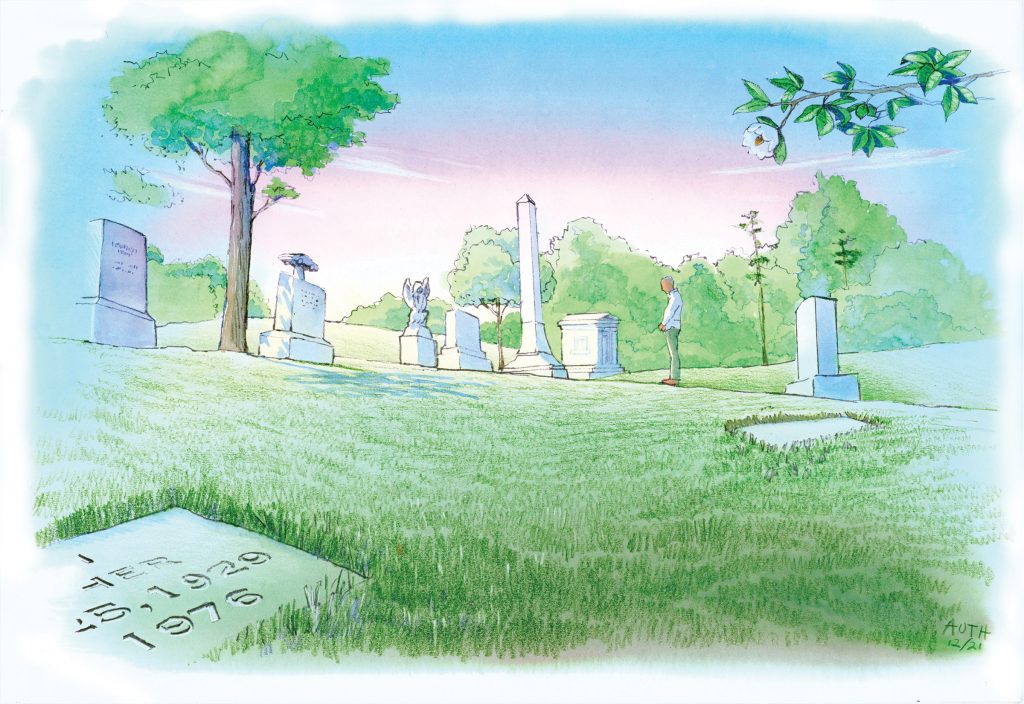I was strolling one day in a lonely grave yard
— Early 19th Century folk song
When a voice from the tomb seemed to say
“I once lived as you lived, walked and talked as you talk.
But from earth I was soon called away.”

We Southerners treat our dead differently than folks do in other parts of the country. We bury more often than cremate, so it stands to reason that if you want to learn about a Southern place and its people, go to the local cemetery. Walk through that “marble orchard,” pay attention, and learn.
Notice the dates, how many fall heavily into months like January, February and March – cold and damp months when pneumonia, the “old folks’ friend,” carried so many away.
And there are the markers themselves. They tell you a lot about the person buried there. I recall one carved in the shape of a log truck (a major occupation where I grew up). Another was decorated with deer — the late-lamented was a hunter.
There are those with angels or lambs to tell us that a baby who was a parents’ pride is “safe in the arms of Jesus.”
There are the graves of young people, sometimes with the same date of death, to remind their friends when the car crashed. And husbands and wives, who could not live long without each other, so they didn’t.
There are family plots, some full to overflowing because the mother buried there told her children that no matter how far they roamed they had better make arrangements to be brought back and put down by her. She believed in the bodily resurrection and when Judgment Day came, she had no intention of rising up, looking around, and seeing a bunch of strangers.
Over under a pecan tree is a grave that never has flowers on it – he didn’t like flowers. He liked Auburn and Mardi Gras, so every football season the stone is festooned with orange and blue, while during the week before Lent it is hung with masks and beads.
Here is the empty grave, with a simple marker saying how the young man who, according to his yearbook, was president of the senior class, captain of the football team, best looking and “an all-around good sport” died in 1944, fighting in France, and is buried over there.
Out in the country is the little family cemetery with the road curving around it. The road would have gone through, but when the county tried to find out who owned the land, they discovered that the property had been deeded “to the dead” and the dead weren’t about to sign it over. Hence the curve.
In addition to being markers to memory and loss, these graves are also affirmations and celebrations. Over the years I have seen enough of them to know that despite the uniqueness of each plot and the person buried there, there is a sameness that reflects the character of the South – its nobility, its flaws and its foibles.
There is always that one grave to remind us of the really important things. My favorite reads simply, “I am not here. I live in my children.”
And she does.
“Oh, those tombs, lonely tombs,
Seem to say in a low gentle tone,
Oh, how sweet is the rest,
In that beautiful, heavenly home.”
Harvey H. (Hardy) Jackson is Professor Emeritus at Jacksonville State University. He can be reached at [email protected]




